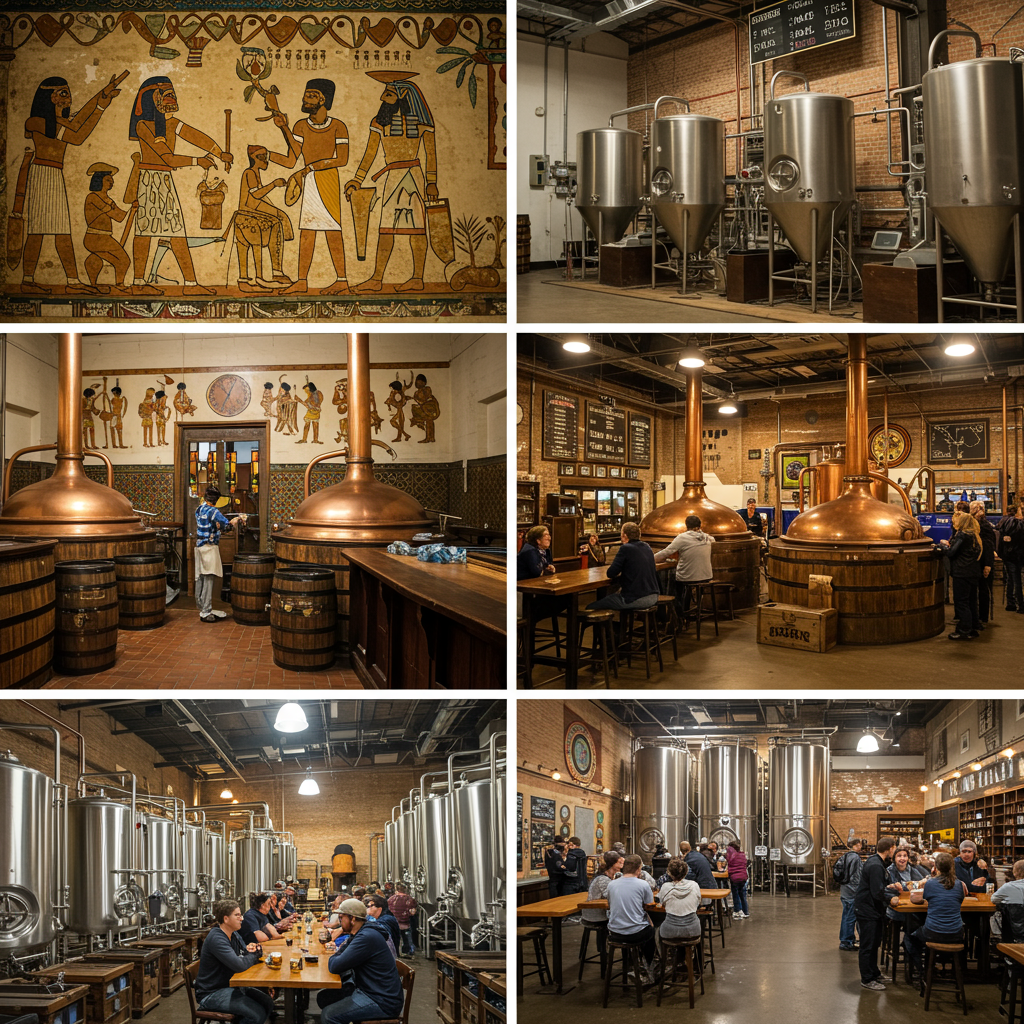Four Decades of Craft Beer Evolution
The beer landscape has undergone significant transformation over the years, especially when we reflect on the past four decades. Back in 1984, the options available to beer lovers were limited, with most establishments offering generic lagers from major breweries. However, a shift was on the horizon, driven by a burgeoning curiosity for authentic and diverse beer experiences. This thirst for originality and quality set the stage for a craft beer revolution that would ripple across borders.
In the United States, as beer enthusiasts and homebrewers began to experiment and demand more variety, neighborhoods would later see the emergence of local breweries offering rich, flavorful craft beers that sharply contrasted with the mainstream options. BreweriesNearMe.us is your ideal gateway to explore the vibrant craft beer culture and connect with breweries that have been at the forefront of this revolution.
Pioneering Brewpubs: A New Dawn for Craft Beer
1984 was a landmark year with the opening of Spinnakers Brewpub in Victoria, a move that would inspire many early craft beer pioneers, hailing both from Canada and the United States. This British-style brewpub not only introduced a diverse beer menu but also paired it with sumptuous food, setting a new standard for beer experiences.
As Spinnakers paved the way, Granville Island Brewing also established itself in Vancouver, focusing on European-style premium lagers. These breweries laid the foundations for a craft beer industry that began to build momentum, drawing beer lovers into a world where flavor and creativity took precedence.
Trailblazers of the Craft Beer Movement
The late 1980s and early 1990s were pivotal for the craft beer scene. Okanagan Spring Brewing played a crucial role as one of the larger microbreweries capable of wider distribution, educating the public on beer diversity. Though it eventually came under larger corporate ownership, its legacy as a craft beer pioneer remains significant.
Similarly, Shaftebury Brewing in Vancouver emerged as an important training ground for brewers who would later establish prominent names, such as Strange Fellows Brewing. Despite changes over time, these early ventures were instrumental in shaping the craft beer landscape we celebrate today.
Festivals Fueling Fermentation
By the mid-1990s, craft breweries were sprouting throughout the region, leading to the establishment of events like the Great Canadian Beer Festival. An event that is celebrated annually, it has played a role in bringing together brewers, lovers, and the curious in a lively collective celebration of beer culture.
Although some festivals like the Autumn Brewmaster’s Festival have come and gone, their legacy lingers as catalysts for community and collaboration among early craft brewing figures. Such gatherings were not just celebrations but breeding grounds for ideas that would propel the industry forward.
The Rise of Cask Culture and the IPA Surge
The early 2000s marked a critical era where the term “craft beer” became more widespread, particularly in Vancouver. CAMRA Vancouver, a volunteer-run organization, played a key role, advocating for quality and offering platforms for brewers to experiment and excel, largely through cask-conditioned creations.
This period also saw the IPA transformation, with brewers like Gary Lohin and Tony Dewald pushing boundaries with hop-forward inventions. Their efforts eventually culminated in renowned brews such as Driftwood’s Fat Tug IPA, setting new benchmarks for the style.
The Emergence of Taprooms and Specialty Shops
As private beer and wine stores expanded beyond conventional offerings, a new niche emerged—specializing in craft beer. These bottle shops became go-to spots for enthusiasts eager to explore global craft creations, featuring the once-popular “bomber” bottles and, later, tall cans.
The Alibi Room, established in 2006 by Nigel Springthorpe, revolutionized the concept of a tap house with its extensive selection. His passion and expertise would eventually lead to the creation of Brassneck Brewing, forever altering the craft beer landscape in the region.
Craft Culture and the Lounge Era
Regulatory changes in 2013 enabled a new business model for craft brewers—the tasting room. Almost all new breweries embraced this approach, positioning their lounges as primary hubs for consumers to engage with craft beer culture firsthand.
This model effectively democratized the craft beer experience, allowing more and more drinkers to appreciate the complexities and nuances of locally brewed creations, fueling a “craft beer revolution” that continues to shape the market today.
Navigating Challenges and Looking Forward
The craft beer industry faced unprecedented challenges during the pandemic, requiring swift adaptation to survive. Yet, the resilience and ingenuity displayed by breweries during these trying times underscore the strength of the craft beer community.
As we look toward the future, there is much to be optimistic about. With award-winning brews and innovative creators, the industry remains vibrant. Supporting local breweries ensures they continue to thrive and innovate, offering remarkable beer experiences to taste and enjoy.
Whether planning your next brewery tour or sampling seasonal local flavors, BreweriesNearMe.us is your trusted guide to the rich and rewarding world of U.S. craft beer.
#CraftBeerCulture #ExploreBreweries #LocalBrews #IPAEvolution #BeerToursUSA



